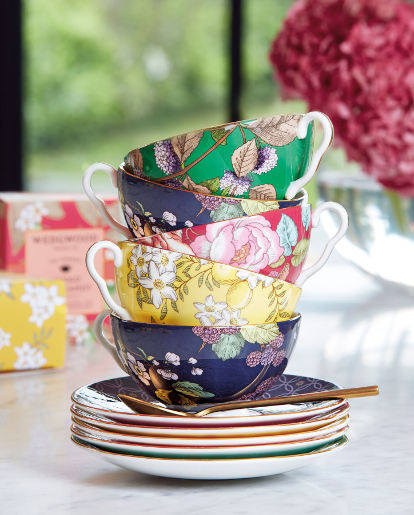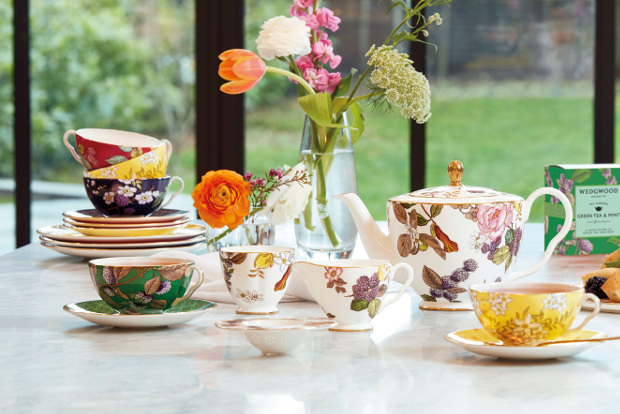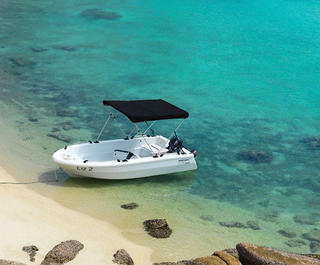
Britain is known as the home of afternoon or high tea, and if you are heading to Old Blighty, you might want to take part in this delectable tradition. You won’t be hard-pressed to find a sophisticated spot, from ritzy London hotels to countryside B&Bs, but if you want an authentic experience from a real authority, head to World of Wedgwood in Barlaston, in the English county of Staffordshire.
Wedgwood has been known for its fine bone china for more than 200 years. Here you can not only tour the Wedgwood Factory, but also visit the Wedgwood Museum, browse the Wedgwood Tea Emporium –Wedgwood Original blends, sourced and blended by masters are the most popular – and take tea in the Wedgwood Tea Room. You can even decorate your own piece of Wedgwood in the decorating studio or pick up a collection of the best-selling Wild Strawberry teaware range.
We sat down with Wedgwood tea curator and ambassador Bernadine Tay to discuss all things tea.

When is the best time to take tea?
The wonderful thing about tea is that it can be enjoyed any time of the day. Tea has many health-giving properties with high levels of antioxidants and polyphenols. Recent studies have shown that we particularly crave a cup of tea in stressful situations because our bodies recognise that it reduces stress hormones such as cortisol, soothing the mind. So keep calm, drink tea.
Are there different teas for different times of the day?
Absolutely. Depending on the weather conditions, your mood, your choice of meal or time of the day, there is always a tea that is best enjoyed at that moment. Black tea is best in the morning or in the afternoon as a pick-me-up because of its higher levels of caffeine.
To sustain a gentle alertness throughout the day, green or white tea is a good option, as it is light and refreshing. It also slowly releases caffeine into your bloodstream so it is best for energy and productivity.
One type recommended after dinner or before bed would be herbal tea such as rooibos, as it is a soothing finish to a meal, contains no caffeine and will ensure a restful sleep. Understanding the types of tea and their properties can enhance your experience.

What is tea best served in?
All that our senses experience contribute to the enjoyment of a cup of tea. Imagine the weight of a fine bone china teacup and how it feels against your lips, the crystal clear sound it makes as you pour the tea and it hits the bottom.
Most importantly, serving tea in the right cup can dramatically enhance its taste, as 90 per cent of what we perceive as taste, is actually smell. Fine bone china tea cups are better than glass cups, for instance, as on a microscopic level, glazed surfaces like fine bone china have tiny bumps and dents.
The tea collides against many micro-sized obstacles on the journey from inside of the cup to inside your mouth. These tiny imperfections allow the liquid to open.
If you imagine, it is similar to waves crashing into rocks, where the water sprays everywhere and foams up into whitecaps. The difference being that instead of ocean water, it’s the smell and flavour crashing into and opening up against the ceramic walls of your teacup, giving you a slightly more open sensory experience than you would have with a glass tea cup.
More British inspiration:
A whole new world: 10 Things To Love About London In The Winter
The rail way: Discover Britain On Belmond
What is the correct procedure for serving tea?
The best way to serve tea is to ask your guests what tea they would like and how they take their tea. It is kind to provide your guests with the option for milk, sugar and perhaps some slices of lemon, which should be on your tea tray. However, it might be useful to know that green or white tea is typically drunk without milk or sugar, as they have a much more delicate aroma and flavour.
On serving, the tea should always be poured into the cup first and then the option to include milk later. This is because the intensity and depth of the tea will determine how much milk is needed for the best flavour experience.

If you are having scones, does the cream come before or after jam?
Of course it is not set in stone, but it is recommended to spread the cream first then neatly place the jam on top with a spoon and spread. Due to the difference in texture density, what will be achieved is a prettier, beautifully coloured red and white pile of creamy heaven. A feast for the eyes, as well as the mouth.
Is there proper attire for taking tea?
Not at all. Comfort, above all, is most important.
Any other notes on etiquette?
Always ensure you hold the cup by its ears with one hand and the saucer below it with the other hand as you sip the tea. It is also polite to offer tea to your guests before yourself, ensuring they never have an empty cup.

What can people expect from high tea at Wedgwood?
Through engaging all the senses, our guests can expect an unforgettable high tea experience at Wedgwood. A well curated and personalised afternoon tea and cocktail menu coupled with a beautiful atmosphere promises to bring our guests on a unique journey of discovery. Every detail of dining, from what you see, touch, taste, smell and hear all enhance and transport you.
The Wedgwood tea range encompasses blends that appeal to every taste and style. Ranging from the classic English Breakfast and Wedgwood Original blends, to luxurious Single Estate and Wellness teas, the Wedgwood experience promises to bring afternoon tea to the next level.
Is there anything you must not do while taking tea?
Not drink it on your own. As tea is made for sharing, it is a great way to connect with others and for good conversation, always offer it to anyone around you.
Images: World of Wedgwood










